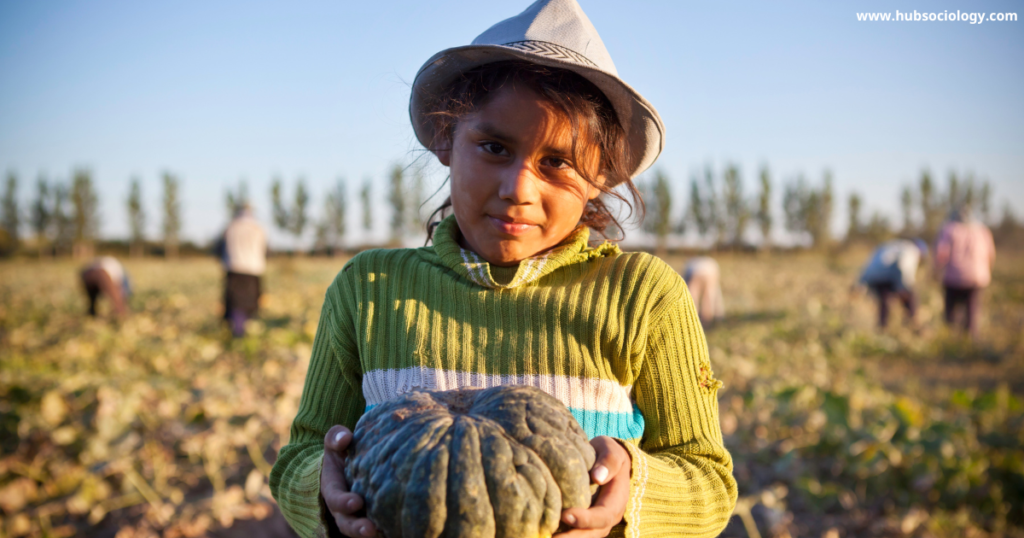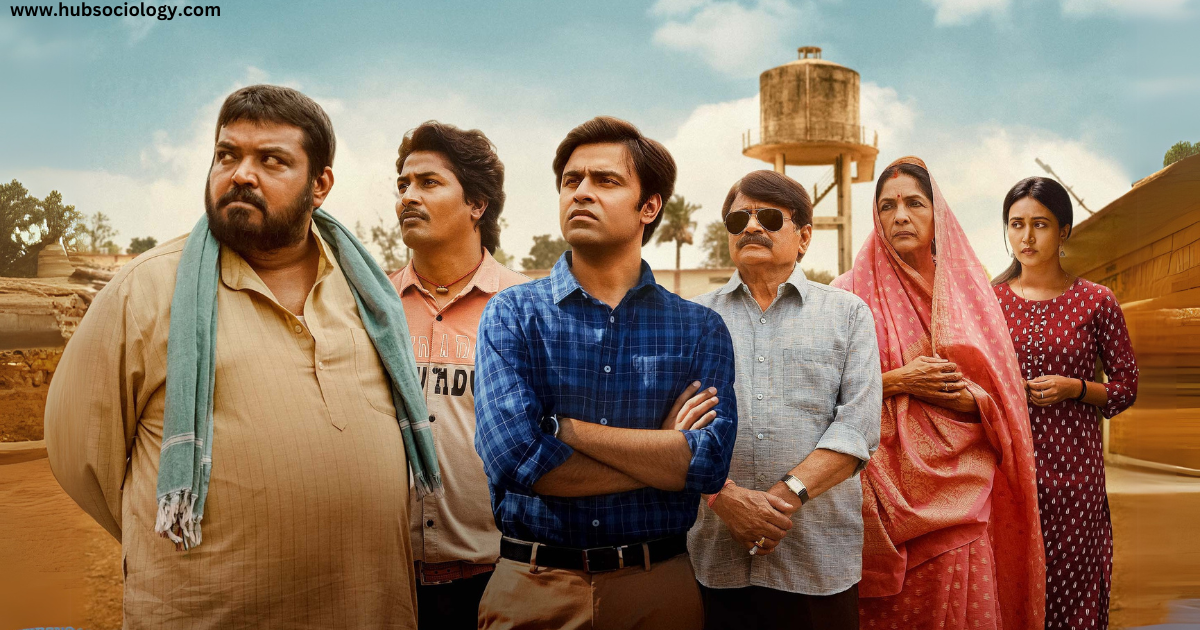The introduction of the Panchayati Raj Institution (PRI) in post-independent India marked a significant step in the decentralization of power and the democratization of governance at the grassroots level. Rooted in the Gandhian vision of self-reliant villages, the Panchayati Raj system was envisioned as a means to empower rural communities, promote participatory democracy, and address local issues through local governance. This article explores the sociological implications of the introduction of Panchayati Raj in India, examining its historical context, structural framework, and the consequences it has had on rural society, particularly in terms of social stratification, power dynamics, and community development.

Table of Contents
Historical Context and Gandhian Vision
The idea of Panchayati Raj is deeply embedded in India’s historical and cultural fabric. Traditional village panchayats, which were informal bodies of elders, had long been a part of rural life, resolving disputes and managing local affairs. However, with the advent of colonial rule, these institutions were weakened as the British centralized administrative control and introduced a bureaucratic system that marginalized local governance.
Mahatma Gandhi, one of the foremost leaders of India’s independence movement, strongly advocated for the revival of village panchayats as the foundation of India’s political system. He believed that India’s true development could only be achieved through the empowerment of its villages, which he saw as self-sufficient republics. Gandhi’s vision was rooted in the principles of decentralization, direct democracy, and community participation. He argued that villages should be the basic units of governance, where decisions are made collectively and resources are managed locally.
After India gained independence in 1947, the Constituent Assembly debated the role of local self-governance in the new democratic framework. While Gandhi’s ideas were influential, the framers of the Constitution adopted a more centralized model of governance, with the state governments holding significant power. However, the Directive Principles of State Policy (Article 40) in the Constitution did call for the establishment of village panchayats to enable self-governance.
The Introduction of Panchayati Raj Institutions
The formal introduction of the Panchayati Raj system came in 1959, following the recommendations of the Balwantrai Mehta Committee. The committee was appointed to examine the functioning of the Community Development Programme (CDP) and the National Extension Service (NES), which had been launched in the early 1950s to promote rural development. The committee found that these programs had failed to achieve their objectives due to a lack of local participation and recommended the establishment of a three-tier system of local self-governance.

The Panchayati Raj system, as recommended by the committee, consisted of three levels:
- Gram Panchayat at the village level,
- Panchayat Samiti at the block level, and
- Zila Parishad at the district level.
The Gram Panchayat, the lowest tier, was designed to be the cornerstone of the system, with elected representatives responsible for local governance and development. The Panchayat Samiti and Zila Parishad were intended to coordinate development activities at the block and district levels, respectively.
The introduction of Panchayati Raj was seen as a way to democratize governance, promote rural development, and empower marginalized groups, including women, Scheduled Castes (SCs), and Scheduled Tribes (STs). However, the implementation of the system varied across states, and its effectiveness was often limited by bureaucratic interference, lack of resources, and social inequalities.
Sociological Implications of Panchayati Raj
The introduction of Panchayati Raj had profound sociological implications for rural India. It altered power dynamics, challenged traditional hierarchies, and created new opportunities for social mobility and political participation. However, it also reinforced existing inequalities in some cases and created new forms of exclusion.
1. Democratization and Political Participation
One of the most significant consequences of Panchayati Raj was the democratization of rural governance. By establishing elected local bodies, the system provided a platform for ordinary citizens, including those from marginalized communities, to participate in decision-making processes. This was a radical departure from the traditional system, where power was concentrated in the hands of a few dominant castes and elites.
The reservation of seats for SCs, STs, and women further democratized the system. For the first time, marginalized groups gained access to positions of power and influence, challenging the dominance of upper-caste elites. This had a transformative effect on rural society, as it enabled marginalized communities to assert their rights and demand accountability from local authorities.
However, the extent of democratization varied across regions. In some areas, dominant castes and elites continued to control Panchayati Raj institutions, either by fielding proxy candidates or by exerting influence over elected representatives. In other cases, elected representatives from marginalized groups faced resistance and discrimination, limiting their ability to function effectively.
2. Social Stratification and Power Dynamics
The introduction of Panchayati Raj disrupted traditional power structures in rural India. By providing a platform for marginalized groups to participate in governance, the system challenged the hegemony of upper-caste elites and created new avenues for social mobility. This was particularly significant for Dalits and Adivasis, who had historically been excluded from positions of power.
However, the system also reinforced existing social hierarchies in some cases. Dominant castes often used their economic and social capital to maintain control over Panchayati Raj institutions, either by fielding their own candidates or by influencing the decision-making process. In some regions, the reservation of seats for marginalized groups led to a backlash, with dominant castes resisting the empowerment of Dalits and Adivasis.
The participation of women in Panchayati Raj also had mixed outcomes. While the reservation of seats for women increased their representation in local governance, many women faced challenges in exercising their authority. In some cases, they were reduced to figureheads, with their husbands or male relatives wielding actual power. Despite these challenges, the participation of women in Panchayati Raj has been a significant step towards gender equality in rural India.
3. Community Development and Social Change
Panchayati Raj institutions played a crucial role in promoting rural development and addressing local issues. By decentralizing decision-making, the system enabled communities to identify their priorities and allocate resources accordingly. This led to improvements in areas such as education, healthcare, sanitation, and infrastructure.
However, the effectiveness of Panchayati Raj in promoting development was often limited by a lack of resources, bureaucratic interference, and corruption. In many cases, local bodies were unable to raise sufficient funds or implement development projects due to a lack of technical expertise and administrative support. This undermined the potential of Panchayati Raj to bring about meaningful social change.
Despite these challenges, Panchayati Raj has had a lasting impact on rural society. It has empowered marginalized groups, promoted participatory democracy, and created new opportunities for social and political engagement. The system has also fostered a sense of community ownership and collective responsibility, which is essential for sustainable development.
Conclusion on Panchayati Raj Institution
The introduction of Panchayati Raj in post-independent India was a landmark event in the history of rural governance. Rooted in the Gandhian vision of self-reliant villages, the system sought to decentralize power, promote participatory democracy, and empower marginalized communities. While the implementation of Panchayati Raj has been uneven and fraught with challenges, it has had profound sociological implications for rural India.
By democratizing governance and challenging traditional hierarchies, Panchayati Raj has created new opportunities for social mobility and political participation. It has empowered marginalized groups, including women, Dalits, and Adivasis, and fostered a sense of community ownership and collective responsibility. However, the system has also reinforced existing inequalities in some cases and created new forms of exclusion.

Despite its limitations, Panchayati Raj remains a vital institution for promoting rural development and social change in India. Its success depends on addressing the challenges of resource constraints, bureaucratic interference, and social inequalities, and ensuring that marginalized groups are able to exercise their rights and participate fully in the decision-making process. As India continues to grapple with the challenges of development and social justice, the Panchayati Raj system offers a promising framework for building a more inclusive and equitable society.
Topic Related Questions
5 Marks Questions on Panchayati Raj Institution (Short Answer Questions)
- What is the significance of the Balwantrai Mehta Committee in the context of Panchayati Raj in India?
- Explain the three-tier structure of the Panchayati Raj system in India.
- How did the Gandhian vision influence the establishment of Panchayati Raj in post-independent India?
- What role did Article 40 of the Indian Constitution play in the introduction of Panchayati Raj?
- Discuss the role of Gram Panchayats in rural development.
- How has the reservation policy impacted the participation of marginalized groups in Panchayati Raj?
- What are the key challenges faced by Panchayati Raj institutions in India?
- How does Panchayati Raj promote participatory democracy at the grassroots level?
- What is the role of women in Panchayati Raj institutions?
- How did traditional village panchayats differ from the modern Panchayati Raj system?
10 Marks Questions on Panchayati Raj Institution (Detailed Answer Questions)
- Discuss the historical evolution of Panchayati Raj in India, from traditional village panchayats to the modern three-tier system.
- Analyze the sociological impact of Panchayati Raj on rural power dynamics and social stratification.
- Evaluate the role of Panchayati Raj in empowering marginalized communities, including women, Scheduled Castes, and Scheduled Tribes.
- How has the decentralization of power through Panchayati Raj contributed to rural development in India?
- Critically examine the challenges faced by Panchayati Raj institutions in achieving their objectives.
- Discuss the role of Panchayati Raj in promoting grassroots democracy and community participation in India.
- How has the reservation policy in Panchayati Raj institutions affected the representation of marginalized groups?
- Explain the role of Panchayati Raj in addressing local issues and promoting sustainable development in rural India.
- What are the key differences between the traditional village panchayats and the modern Panchayati Raj system?
- Discuss the role of Panchayati Raj in bridging the gap between the government and rural communities.
15 Marks Questions on Panchayati Raj Institution (Essay-Type Questions)
- “The introduction of Panchayati Raj in post-independent India was a significant step towards decentralization and grassroots democracy.” Discuss this statement in the context of its historical background, structure, and sociological consequences.
- Critically analyze the impact of Panchayati Raj on rural society, with a focus on social stratification, power dynamics, and community development.
- Evaluate the role of Panchayati Raj in empowering marginalized groups, including women, Scheduled Castes, and Scheduled Tribes, in post-independent India.
- Discuss the challenges and limitations of Panchayati Raj institutions in India. How can these challenges be addressed to strengthen grassroots governance?
- “Panchayati Raj is not just a system of governance but a tool for social transformation.” Elaborate on this statement with reference to its role in rural development and social change.
- Examine the role of Panchayati Raj in promoting participatory democracy and decentralized governance in India. How has it impacted rural communities?
- Discuss the Gandhian vision of village self-governance and its influence on the establishment of Panchayati Raj in post-independent India.
- Analyze the role of Panchayati Raj in addressing local issues and promoting sustainable development in rural India.
- How has the reservation policy in Panchayati Raj institutions impacted the representation and empowerment of marginalized groups? Discuss with examples.
- “The success of Panchayati Raj depends on addressing challenges such as resource constraints, bureaucratic interference, and social inequalities.” Critically evaluate this statement.

1 thought on “Village Panchayati Raj Institution in Post-Independent India and its Consequences”